 |
MARGINAL UTILITY AND CONSUMER CHOICE:COST-OF-LIVING INDEXES |
| << Note it is repeated:Consumer Preferences, Revealed Preferences |
| Review of Consumer Equilibrium:INDIVIDUAL DEMAND, An Inferior Good >> |
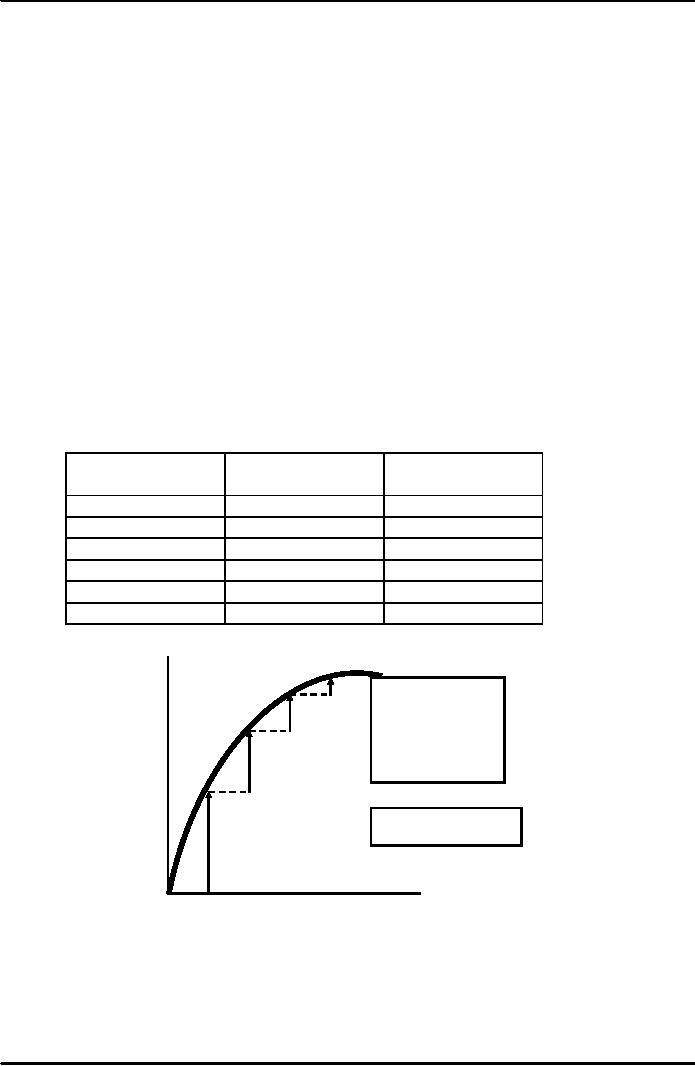
Microeconomics
ECO402
VU
Lesson
9
MARGINAL
UTILITY AND CONSUMER
CHOICE
Marginal
utility
measures the
additional satisfaction obtained
from consuming one
additional unit of a
good.
Marginal
Utility: An Example
The marginal
utility derived from
increasing from 0 to 1 units of
food might be 9
Increasing from
1 to 2 might be 7
Increasing from
2 to 3 might be 5
Observation:
Marginal utility is
diminishing
Diminishing
Marginal Utility
The principle
of diminishing marginal utility
states that as more and
more of a good is
consumed,
consuming additional amounts
will yield smaller and
smaller additions to
utility.
Relationship
of Total and Marginal
Utility
Diminishing
Marginal Utility:
An
Example
Quantity
of good
Total
utility
Marginal
utility
consumed
0
0
1
4
4
2
7
3
3
9
2
4
10
1
5
10
0
Utility
TU
10
1
Total
utility of
consuming
a certain
2
amount
is equal to
the
sum of the
marginal
utilities up
3
to
the point
5
Total
utility increases
at
a decreasing rate
4
2
3
4
5
Quantity
0
1
41
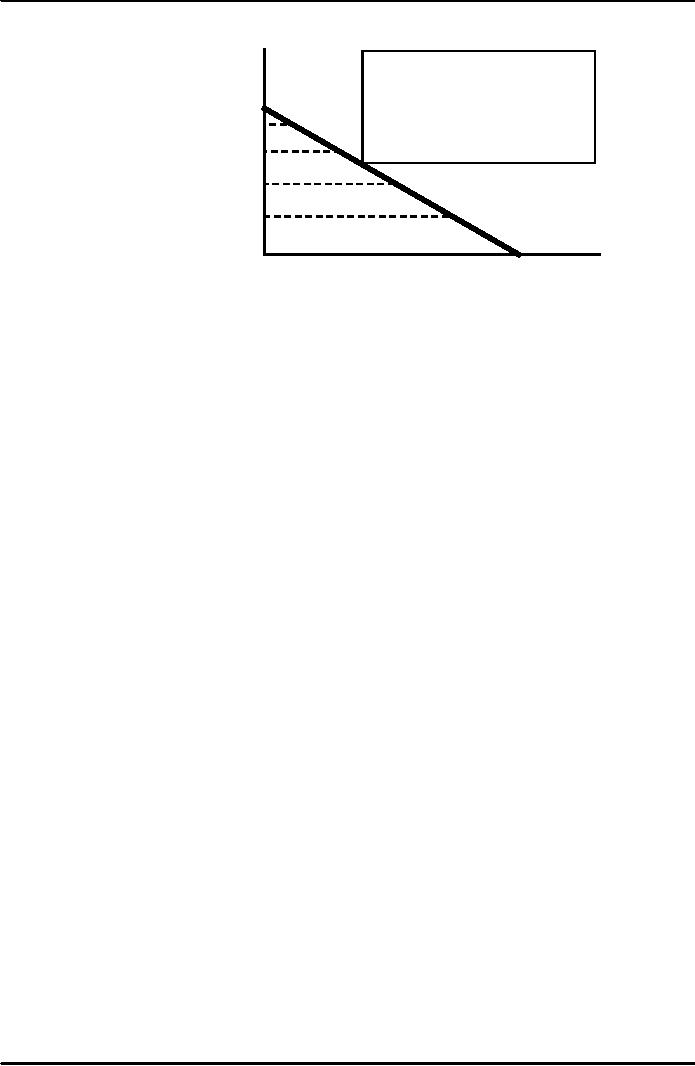
Microeconomics
ECO402
VU
Marginal
Utility
The
fact that total
utility
increases
at a decreasing
5
rate
is shown by negative
4
slope
of marginal utility
curve
3
2
1
MU
2
3
4
5
Quantity
0
1
Marginal
Utility and
Consumer
Choice
Marginal
Utility and the Indifference
Curve
If consumption
moves along an indifference
curve, the additional
utility derived from
an
increase
in the consumption of one
good, food (F), must
balance the loss of utility
from
the
decrease in the consumption in
the other good, clothing
(C).
Formally:
0
= MUF (ΔF) + MUC (ΔC)
Rearranging:
-
(ΔC/ ΔF) =
MUF /
MUC
Because:
-
( ΔC
/ ΔF ) = MRS
of F
for C
MRS
=
MUF/MUC
When
consumers maximize satisfaction
the:
MRS
=
PF/PC
Since
the MRS is also equal to the
ratio of the marginal
utilities of consuming F and C,
it
follows
that:
MUF/MUC
=
PF/PC
Which
gives the equation for
utility maximization?
MU
F /
PF =
MU
C /
PC
Total
utility is maximized when
the budget is allocated so
that the marginal utility
per dollar
of
expenditure is the same for
each good.
This
is referred to as the equal
marginal principle.
42
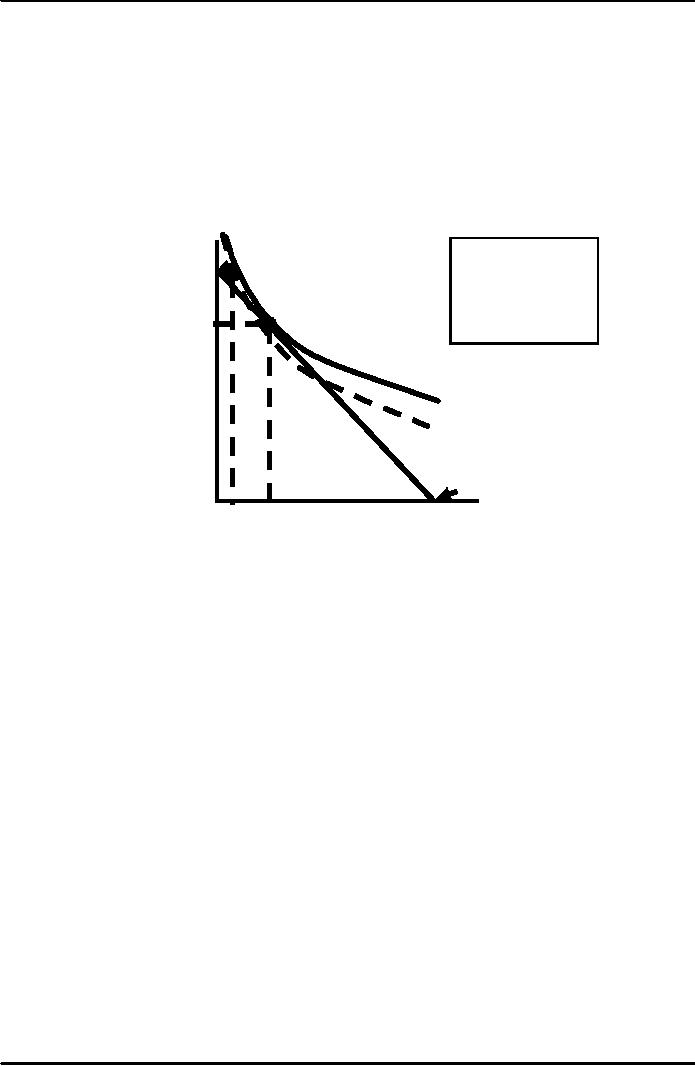
Microeconomics
ECO402
VU
Gasoline
Rationing
In 1974 and
again in 1979, the
government imposed price
controls on gasoline.
This resulted
in shortages and gasoline
was rationed.
Non-price
rationing is an alternative to market
rationing.
Under one
form everyone has an equal
chance to purchase a rationed
good.
Gasoline is
rationed by long lines at
the gas pumps.
Rationing
hurts some by limiting the
amount of gasoline they can
buy.
This
can be seen in the following
model.
It
applies to a woman with an
annual income of
$20,000.
Spending
on
other
With
a limit of
A
goods
($) 20,000
2,000
gallons,
D
the
consumer moves
18,00
to
a lower
C
indifference
curve
15,00
(lower
level of utility).
U
U
B
Gasoline
2,00
5,00
20,00
(gallons
per year)
COST-OF-LIVING
INDEXES
The
CPI is calculated each year
as the ratio of the cost of
a typical bundle of
consumer
goods
and services today in
comparison to the cost
during a base period.
Example
Two sisters,
Raheela and Sarah, have
identical preferences.
Sarah began
college in 1987 with a $500
discretionary budget.
In 1997,
Raheela started college and
her parents promised her a
budget that was
equivalent
in purchasing power.
Price
of books
$20/book
$100/book
Number
of books
15
6
Price
of food
$2.00/lb
$2.20/lb
Pounds
of food
100
300
Expenditure
$500
$1,260
·
Sarah'
Expenditure
·
$500=100
lbs of food x $2.00/lb +15
books x $20/book
·
Raheela'
Expenditure for Equal
Utility
·
$1,260=300
lbs of food x $2.20/lb +6
books x $100/book
43
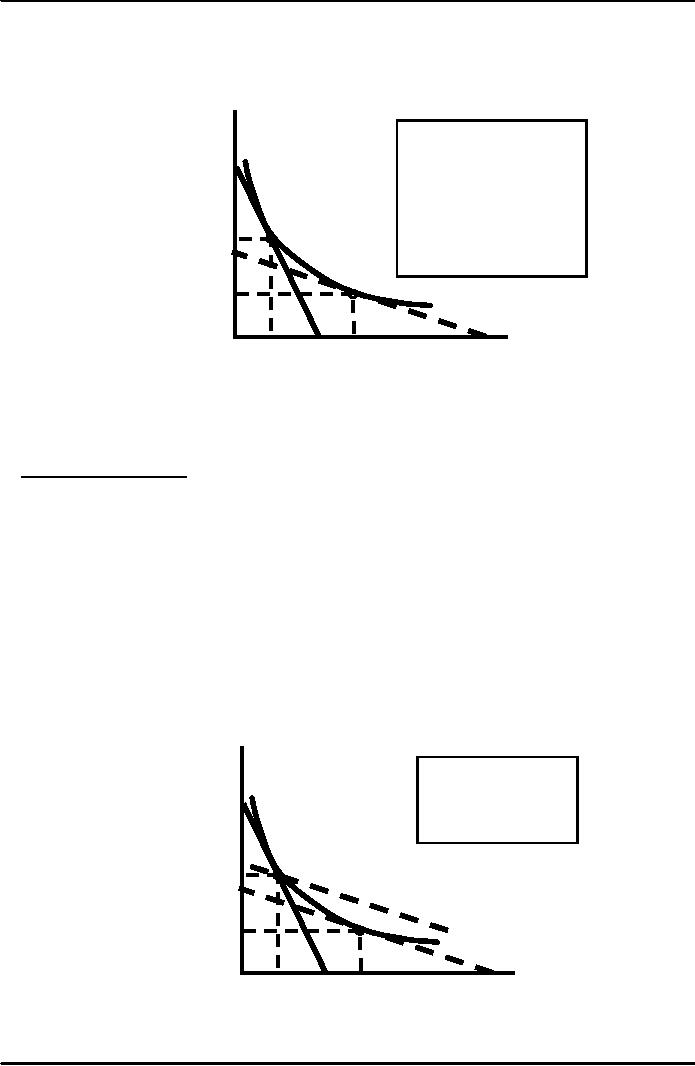
Microeconomics
ECO402
VU
·
The
ideal cost-of-living adjustment
for Raheela is $760.
·
The
ideal cost-of-living index is
$1,260/$500 = 2.52 or
252.
·
This
implies a 152% increase in
the cost of living.
Books
(per
For
Raheela to achieve
quarter)
the
same level of utility
U1
25
as
Sarah, with the
higher
prices,
her budget must
20
be
sufficient to allow
her
to
consume the bundle
A
15
shown
by point B.
10
B
5
l2
l1
Food
(lb./quarter)
0
50 100 200 250 300
350 400 450 500
550 600
The
ideal cost of living index
represents the cost of
attaining a given level of
utility at current
(1997)
prices relative to the cost
of attaining the same
utility at base (1987)
prices.
To
do this on an economy-wide basis
would entail large amounts
of information.
Price
indexes, like the CPI,
use a fixed consumption
bundle in the base period.
Called a
Laspeyres
price index.
The
Laspeyres index tells
us:
The amount of
money at current year prices
that an individual requires to
purchase the
bundle
of goods and services that
was chosen in the base
year divided by the cost
of
purchasing
the same bundle at base
year prices.
Calculating
Raheela's Laspeyres cost of
living index
Setting the
quantities of goods in 1997
equal to what were bought by
her sister, but
setting
their prices at their 1997
levels result in an expenditure
of
$1,720
(100 x 2.20 + 15 x
$100)
Her
cost of living adjustment
would now be $1,220.
The
Laspeyres index is:
$1,720/$500
= 344.
This
overstates the true
cost-of-living increase.
Books
(per
quarter)
Using
the Laspeyres
index
results in the
U1
25
budget
line shifting
up
from I2 to I3.
20
A
15
10
B
l3
5
l2
l1
Food
(lb./quarter)
0
50 100 200 250 300
350 400 450 500
550 600
44
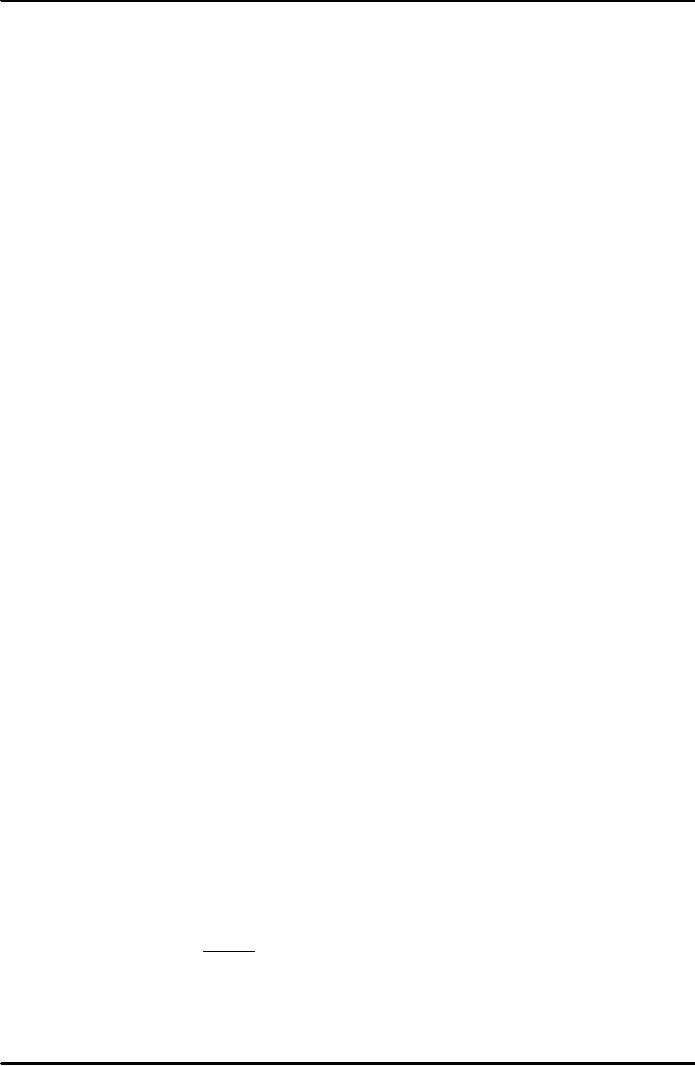
Microeconomics
ECO402
VU
What
Do You Think?
Does the
Laspeyres index always
overstate the true
cost-of-living index?
Yes!
The Laspeyres
index assumes that consumers
do not alter their
consumption patterns
as
prices change.
By increasing
purchases of those items
that have become relatively
cheaper, and
decreasing
purchases of the relatively
more expensive items
consumers can achieve
the
same level of utility
without having to consume
the same bundle of
goods.
The
Paasche Index
Calculates the
amount of money at current-year
prices that an individual
requires to
purchase
a current bundle of goods
and services divided by the
cost of purchasing
the
same
bundle in the base
year.
Comparing
the Two Indexes
Suppose:
Two goods:
Food (F) and Clothing
(C)
Comparing
the Two Indexes
Let:
·
P & P be current
year prices
Ft
Ct
·
P & P be
base year prices
Fb
Cb
·
F & C be current
year quantities
t
t
·
F & C be base
year quantities
b
b
Both indexes
involve ratios that involve
today's current year prices,
PFt and PCt.
However, the
Laspeyres index relies on
base year consumption, Fb and
Cb.
Whereas, the
Paasche index relies on
today's current consumption,
Ft and Ct
.
Then
a comparison of the Laspeyres
and Paasche indexes gives
the following
equations:
LI
= --P-Ft-F-b----P-Ct-Cb----
-
- - + - - ---
PFb Fb
+ PCb Cb
PI
= --P---F--+---C----------
-
Ft - t
- P -t Ct
PFb Ft
+ PCb Ct
Sarah
(1990)
·
Cost of
base-year bundle at current
prices equals
$1,720
(100 lbs x $2.20/lb + 15
books x $100/book)
·
Cost of
same bundle at base year
prices is
$500
(100 lbs x $2.00/lb + 15
books x $20/book)
Sarah
(1990)
$1,
720
LI
=
=
344
$500
·
Cost of
buying current year bundle
at current year prices
is
$1,260
(300 lbs x $2.20/lb + 6
books x $100/book)
45
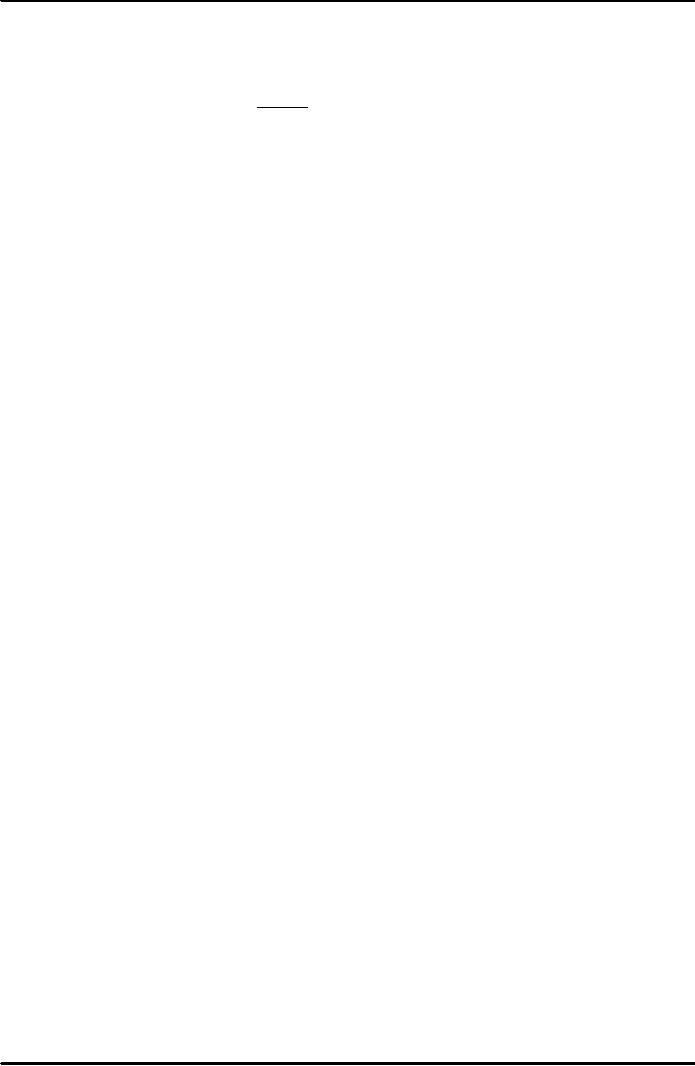
Microeconomics
ECO402
VU
·
Cost of
the same bundle at base
year prices is
$720
(300 lbs x $2/lb + 6 books x
$20/book)
$1,260
PI
=
=
175
$720
The
Paasche index will
understate the cost of
living because it assumes
that the individual
will
buy the current year
bundle in the base
year.
46
Table of Contents:
- ECONOMICS:Themes of Microeconomics, Theories and Models
- Economics: Another Perspective, Factors of Production
- REAL VERSUS NOMINAL PRICES:SUPPLY AND DEMAND, The Demand Curve
- Changes in Market Equilibrium:Market for College Education
- Elasticities of supply and demand:The Demand for Gasoline
- Consumer Behavior:Consumer Preferences, Indifference curves
- CONSUMER PREFERENCES:Budget Constraints, Consumer Choice
- Note it is repeated:Consumer Preferences, Revealed Preferences
- MARGINAL UTILITY AND CONSUMER CHOICE:COST-OF-LIVING INDEXES
- Review of Consumer Equilibrium:INDIVIDUAL DEMAND, An Inferior Good
- Income & Substitution Effects:Determining the Market Demand Curve
- The Aggregate Demand For Wheat:NETWORK EXTERNALITIES
- Describing Risk:Unequal Probability Outcomes
- PREFERENCES TOWARD RISK:Risk Premium, Indifference Curve
- PREFERENCES TOWARD RISK:Reducing Risk, The Demand for Risky Assets
- The Technology of Production:Production Function for Food
- Production with Two Variable Inputs:Returns to Scale
- Measuring Cost: Which Costs Matter?:Cost in the Short Run
- A Firm’s Short-Run Costs ($):The Effect of Effluent Fees on Firms’ Input Choices
- Cost in the Long Run:Long-Run Cost with Economies & Diseconomies of Scale
- Production with Two Outputs--Economies of Scope:Cubic Cost Function
- Perfectly Competitive Markets:Choosing Output in Short Run
- A Competitive Firm Incurring Losses:Industry Supply in Short Run
- Elasticity of Market Supply:Producer Surplus for a Market
- Elasticity of Market Supply:Long-Run Competitive Equilibrium
- Elasticity of Market Supply:The Industry’s Long-Run Supply Curve
- Elasticity of Market Supply:Welfare loss if price is held below market-clearing level
- Price Supports:Supply Restrictions, Import Quotas and Tariffs
- The Sugar Quota:The Impact of a Tax or Subsidy, Subsidy
- Perfect Competition:Total, Marginal, and Average Revenue
- Perfect Competition:Effect of Excise Tax on Monopolist
- Monopoly:Elasticity of Demand and Price Markup, Sources of Monopoly Power
- The Social Costs of Monopoly Power:Price Regulation, Monopsony
- Monopsony Power:Pricing With Market Power, Capturing Consumer Surplus
- Monopsony Power:THE ECONOMICS OF COUPONS AND REBATES
- Airline Fares:Elasticities of Demand for Air Travel, The Two-Part Tariff
- Bundling:Consumption Decisions When Products are Bundled
- Bundling:Mixed Versus Pure Bundling, Effects of Advertising
- MONOPOLISTIC COMPETITION:Monopolistic Competition in the Market for Colas and Coffee
- OLIGOPOLY:Duopoly Example, Price Competition
- Competition Versus Collusion:The Prisoners’ Dilemma, Implications of the Prisoners
- COMPETITIVE FACTOR MARKETS:Marginal Revenue Product
- Competitive Factor Markets:The Demand for Jet Fuel
- Equilibrium in a Competitive Factor Market:Labor Market Equilibrium
- Factor Markets with Monopoly Power:Monopoly Power of Sellers of Labor